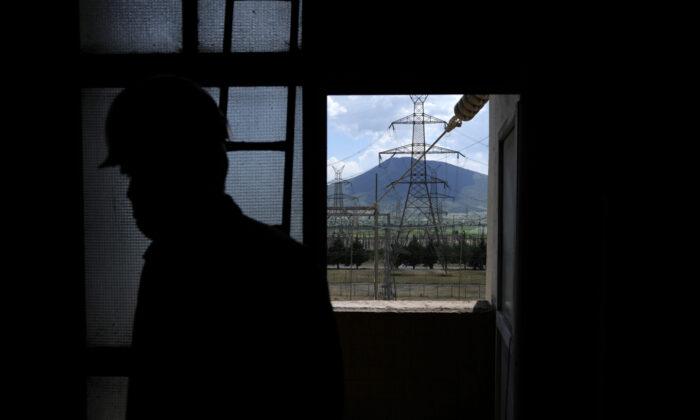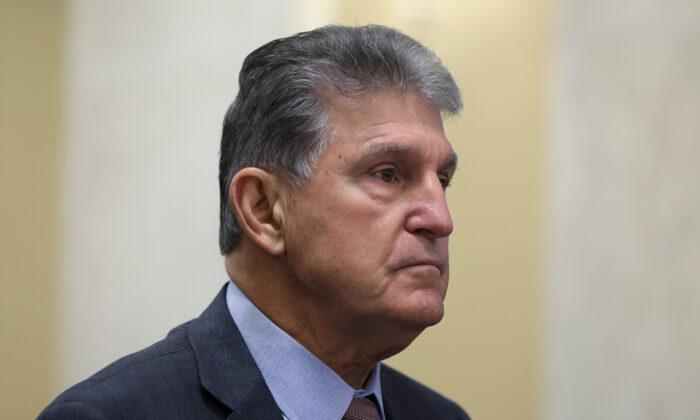Commentary
While it may be easy to pick on Biden, it’s also true that his administration’s energy policies are a confused mess and those policies are hurting consumers and energy producers alike. As a friend of mine put it a few months ago, when it comes to energy, the Biden team “has lots of tactics, but no strategy.”
I’ve used that line many times since I heard it back in February. But I’m no longer convinced that it is true. Indeed, it is now clear that the Biden team has a strategy, one that ignores the need for domestic hydrocarbon production to assure energy security. For instance, the Wall Street Journal reported last month that “The Biden administration
has leased fewer acres for oil-and-gas drilling offshore and on federal land than any other administration in its early stages dating back to the end of World War II .... For offshore drilling, the Biden administration has yet to complete a sale.”
Further, after reading RealClear Energy’s, “
Energy Inflation Was by Design,” a new report by supply-chain consultant Joseph Toomey, it is clear that Biden’s team has a strategy that aims to choke off the supply of hydrocarbons while hyping renewables, electric vehicles, and other policies that are driving up the cost of energy and power. Indeed, Toomey lays out his case right at the beginning, saying the current energy supply and price crisis “was a deliberate outcome of a policy that Biden promised to implement, the same one that Obama had supported during his time in office .... It will review how and why we arrived here, why record energy prices were not happenstance, why domestic conventional energy supplies are inadequate in relation to levels of demand seen in recent years, and how the entire thrust of Obama’s—and now Biden’s—energy policy was designed to deliver these results. It’s not a bug but a core feature of his program.”
Before continuing, I am compelled to note that I’ve known, and respected, Joe Toomey for several years. Further, I bought and read his 2014 book, “
An Unworthy Future.” Toomey knows his numbers and he understands how business works. In this densely packed, fully sourced 31-page report, Toomey documents the numerous policies that the Biden administration has used to stymie the hydrocarbon sector including the cancellation of the Keystone XL pipeline, implementing ESG policies at the Securities and Exchange Commission, biofuel mandates, EV subsidies, and the cancellation of oil and gas leases in the Gulf of Mexico and Alaska. Toomey also points to new rules proposed by the EPA that could impose strict air-quality rules on counties in the Permian Basin, one of the most prolific hydrocarbon basins on the planet. By itself, the Permian accounts for 43 percent of domestic oil production.
Despite its importance to domestic supplies, Toomey writes that the “obvious intent of the new rules” which aim to reduce ozone emissions, is to “increase uncertainty in new production operations, and thus curtain output, by imposing more stringent emission requirements, increasing abatement equipment spending, and expanding site monitoring .... The intent isn’t to address health concerns, since none has been demonstrated. The rules would serve as a backdoor strategy to disrupt fossil fuel production and the real target: GHG emissions.”
While Toomey’s report is comprehensive, his analysis overlooks another example of how the EPA’s regulatory push will result in higher energy prices for consumers. The air-quality rules proposed by the EPA could also force the premature closure of numerous coal-fired power plants and in doing so, reduce reliability and hurt affordability. In a June 21, 2022 comment, the National Rural Electric Cooperative Association said that if the rule is put into place, “All or a very significant portions of 42 gigawatts of coal-fired electric utility generation capacity within the 25 states ... will likely be forced to cease operation in 2026 because the alternative option of installing additional emission controls cannot be achieved under the Proposed Rule’s timelines.” It continued, saying that the ongoing “shifts to intermittent renewable generation and retirements in coal-based baseload generation have been and continue to exert pressure on electric reliability.” The association concluded that the EPA’s rule will “hobble the ability of cooperatives to deliver consistent, reliable, and affordable power to the energy grid.”
Before closing, I will offer one area in which Biden and his appointees are moving in the right direction: nuclear energy. Last month, Energy Secretary Jennifer Granholm said the United States is committed to re-establish itself “
as a leader in nuclear energy, non-proliferation, and climate action.” Further, last year’s infrastructure bill contained about $6 billion that can be used to support the continued operation of existing nuclear reactors. While there is much more that needs to be done to get the U.S. nuclear sector back on track (including reform of the permitting process at the Nuclear Regulatory Commission) it appears the Biden administration understands that there is no viable pathway that will reduce greenhouse gas emissions that doesn’t include a big slug of new nuclear power plants, including small modular reactors.
There is far more to Toomey’s
report than I can recount here. But I recommend it. It’s the fullest rundown of this administration’s energy policies that I have seen. At this point in history, as Russia’s brutal war on Ukraine continues, and Europeans are facing a bleak, energy-starved winter, we need sobriety when talking about our energy and power systems. We need energy realism to make sure the United States doesn’t end up like Europe. And Toomey’s report provides a big dose of energy realism.
Views expressed in this article are opinions of the author and do not necessarily reflect the views of The Epoch Times.




